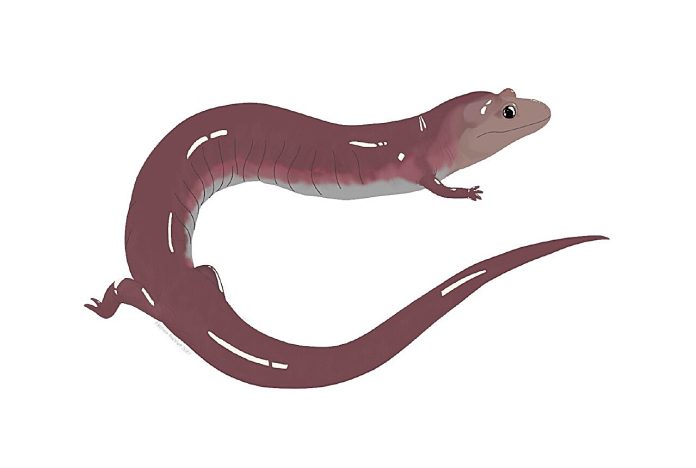
A powerful, long-extinct salamander once roamed the ancient forests of Tennessee, and its recent discovery is helping scientists understand how the region became a hotspot for salamander diversity.
Researchers from East Tennessee State University (ETSU) uncovered the fossil near the Gray Fossil Site & Museum, revealing a creature that likely played a key role in the evolution of today’s Appalachian amphibians.
Named Dynamognathus robertsoni—which means “powerful jaw” in Greek—the giant salamander measured about 16 inches long, making it one of the largest lungless salamanders ever found.
It belongs to the family Plethodontidae, the same family as today’s Appalachian dusky salamanders, which are common in streams and forests but only grow to about seven inches at most.
The discovery, described in the journal Historical Biology, sheds new light on the evolutionary history of salamanders in the Southern Appalachians.
Tennessee is now home to more than 50 different salamander species—about one-eighth of all living species worldwide. This extraordinary diversity has long puzzled scientists, and the fossil find may provide an important clue.
Today, a close relative of Dynamognathus—the Red Hills salamander—can only be found in a few counties in southern Alabama.
Until now, scientists thought these large, burrowing salamanders were a rare evolutionary side branch with little connection to other species. But finding Dynamognathus in East Tennessee suggests that these animals were once much more widespread and may have influenced the evolution of smaller salamanders still living in the region.
The fossil also suggests that the Appalachian region has been an important stage for salamander evolution for millions of years. Warmer climates around five million years ago likely allowed these big salamanders to thrive across a broader range. But as the climate cooled during the ice ages, they may have been pushed south, surviving only in places like Alabama.
According to the research team, predators like Dynamognathus may have driven the fast evolution of other salamanders, especially those living in streams. The discovery adds to a growing list of remarkable fossils found at the Gray Fossil Site, which is known for preserving a diverse range of ancient animals.
The species name robertsoni honors Wayne Robertson, a longtime volunteer at the Gray Fossil Site, who discovered the first fossil of the salamander. Over the years, Robertson has sifted through more than 50 tons of fossil-bearing sediment, helping uncover the region’s rich natural history.
This find is also a celebration of teamwork and curiosity at ETSU. Lead author Davis Gunnin first joined the museum as a teen volunteer with a fascination for fossil salamanders. Now, his work is helping rewrite what we know about the deep past of Appalachia’s unique wildlife.



